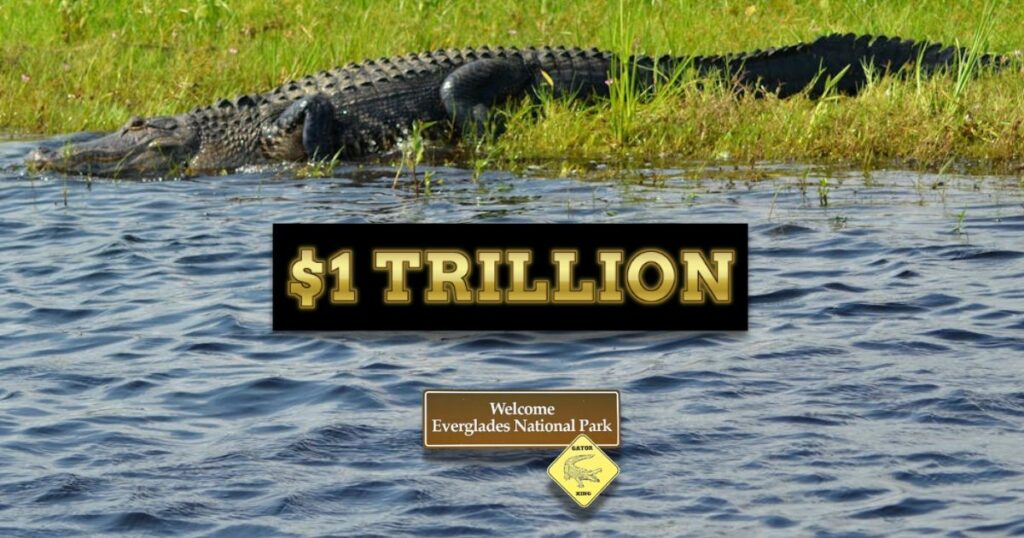The Everglades are too valuable an asset to allow to deteriorate.
It’s time to look at America’s Everglades in a new light.
This iconic natural wonder is much more than a habitat for endangered animals.
Endangered plants and animals are more than just a source of recreation. Not only is it a buffer against storms, it also provides fresh drinking water for South Florida.
The Everglades is an economic powerhouse that supports much of South Florida’s economy and supports millions of jobs.

The Everglades Foundation, in collaboration with Florida Gulf Coast University, has identified an astonishing 84,000 businesses in the 16 counties of the Everglades Basin that are wholly or largely dependent on clean water and a healthy Everglades system for their very existence.
Together, these 84,000 businesses employ more than 2 million South Floridians and generate $223.5 billion in economic activity annually. Economists estimate that more than 3 million of us depend on the Everglades for our livelihoods, considering the ripple effects to suppliers and the broader economy.
We call this the “clean water economy.” Because that’s exactly what Southwest Florida’s entire economic ecosystem is, driven by a healthy and restored Everglades.
Taken together, global economics suggests that the Everglades itself
generates $31.5 billion in economic benefits each year. America’s Everglades will be worth $1 trillion over 50 years.
Like any real estate, the Everglades must be properly maintained to continue to generate value. If water is left untreated and fish die, economic benefits will decline. That’s what’s been happening in recent years.
Consider Florida’s real estate, tourism, and hospitality industries. Earth Economics rightly points out that when our waterways become clogged with toxic blue-green algae or red tide, as happened in 2016 and 2018, their value diminishes. As people in Collier County know all too well, few people buy homes or plan vacations when the beaches are closed and the smell of dead fish is in the air.
Similarly, commercial fishing generates $116 million annually, but not when the salinity of Florida Bay kills fish. But these are the environmental impacts of moving fresh water away from its natural southward path.
Over the past century, instead of maintaining watersheds, we have altered their natural flow with canals, dams, reservoirs, pumps, and lift stations. More than half of the water that once flowed into Florida Bay is now being diverted into the ocean, creating a source of harmful algae that ruins Florida’s summers.
Reflushing all this water had another result. In Florida Bay, changes in the fragile salinity of the estuary turn the once gin-clear water cloudy. One of the world’s greatest fisheries is literally suffocating. While the environmental impact is obvious, the economic impact could be devastating for the hundreds of small businesses that rely on angler income.
However, the recovery is progressing and it is working normally. With the construction of the Tamiami Trail bridge and 11 miles of infiltration barriers, Everglades National Park and Florida Bay are both experiencing increased freshwater inflows.
Meanwhile, key projects in the Central Everglades Plan, including the critical EAA reservoir, have been pushed back to completion by 2029. When fully operational, the EAA reservoir will increase the flow of clean freshwater into the central Everglades by 120 billion gallons per year and reduce unnecessary discharges of polluted lake water by more than half.
Although the repair costs are significant, they are small compared to the value of the property and the income it generates.
Long before economists were able to calculate the Everglades as a $1 trillion resource, investments in Everglades restoration proved worthwhile, yielding a return of $4 for every $1 invested. That’s why I can’t stop now. The Everglades is too important and part of our heritage to never turn back. And as we now know, it is too valuable an asset to allow it to deteriorate.
Eric Eichenberg is CEO and Dr. Paul Hinsley is Chief Economist of the Everglades Foundation.


